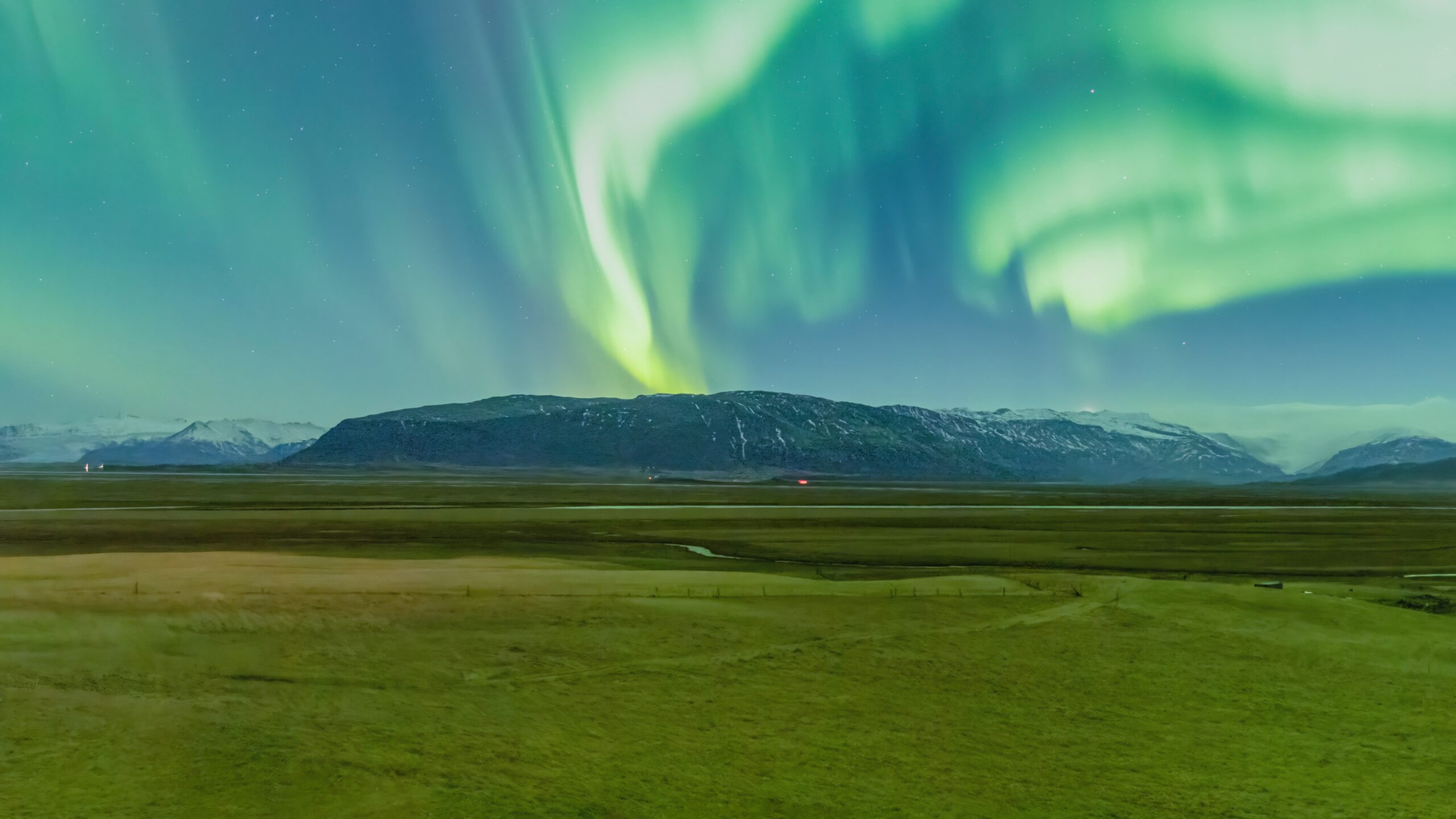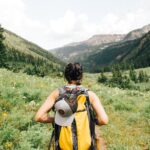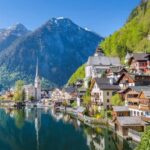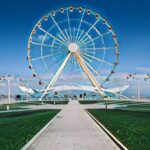The Northern Lights, also known as Aurora Borealis are a natural phenomenon characterized by vibrant and ethereal lights that dance across the night sky. These mesmerizing displays have captivated the hearts and minds of people for centuries, and hold deep significance in various cultures around the world. Furthermore, the allure of the Northern Lights extends to photographers who seek to capture the magic in their lenses.
Understanding the Northern Lights
Origins and scientific explanation
The Northern Lights occur when charged particles from the sun collide with atoms and molecules in Earth’s atmosphere. Specifically, solar winds carry these charged particles towards Earth’s magnetic poles, where they interact with the magnetosphere and release energy in the form of stunning light displays. This phenomenon is the result of the interplay between our planet’s magnetic field and the solar winds.
Variations in colors and patterns
One of the most intriguing aspects of the Northern Lights is the array of colors that adorn the night sky during their appearances. These colors, which include shades of green, red, blue, and purple, are determined by the type of gas particles involved in the collisions. For instance, oxygen often produces green and red lights, while nitrogen contributes to the blue and purple hues. The endless combinations of these colors create a kaleidoscope of beauty.
Factors influencing visibility
Several factors influence the visibility of the Northern Lights. The strength of the solar winds, the proximity of the observer to the magnetic poles, and the level of light pollution in the surrounding areas all play a role in determining how vividly the Northern Lights can be seen. Additionally, weather conditions such as cloud cover and atmospheric moisture can hinder or enhance the visibility of this enchanting phenomenon.
Advantages of Photography Tours for Northern Lights
Access to prime locations and viewpoints
Embarking on a photography tour specifically tailored for capturing the Northern Lights offers photographers the opportunity to access prime locations and viewpoints that maximize their chances of witnessing this celestial spectacle. These tours are meticulously planned to take participants to with optimal conditions for viewing and photographing the Northern Lights. Whether it’s standing on a snow-covered mountaintop or braving the Arctic cold on a frozen lake, photography tours ensure that participants are in the right place at the right time.
Expert guidance from seasoned photographers
Photography tours for Northern Lights provide participants with the invaluable guidance and expertise of seasoned photographers who have honed their skills in capturing this elusive phenomenon. These professionals are well-versed in the technical aspects of Aurora photography, and their knowledge is instrumental in helping participants make the most of their equipment and settings. With their guidance, photographers can learn advanced techniques, composition strategies, and tips for mastering the art of capturing the Northern Lights.
Unique experiences and opportunities
Furthermore, photography tours offer unique experiences and opportunities that go beyond just witnessing the Northern Lights. Participants have the chance to immerse themselves in the local culture and gain insights into the regions they visit. From interacting with indigenous communities to exploring the untouched Arctic landscapes, photography tours provide a holistic experience that combines adventure, education, and artistic expression.
Preparing for a Photography Tour
Selecting the right tour operator
Choosing a reputable and experienced tour operator is crucial for ensuring a successful Northern Lights photography tour. Look for operators that specialize in Aurora photography and have a proven track record of delivering unforgettable experiences. Reading reviews and seeking recommendations from fellow photographers can help in making an informed decision. It is important to find a tour operator that aligns with your photography goals and offers the level of expertise and support you desire.
Necessary photography equipment and gear
Before embarking on a Northern Lights photography tour, it is essential to have the right equipment and gear to capture the captivating beauty of the Aurora. This includes a digital single-lens reflex (DSLR) or mirrorless camera with manual control settings, wide-angle lenses with a low aperture, a sturdy tripod for stability during long exposures, and spare batteries and memory cards to handle extended shooting sessions. It is recommended to carry a remote shutter release to minimize camera shake while capturing long-exposure shots.
Understanding the weather conditions
Weather conditions can greatly impact the visibility and photography opportunities during a Northern Lights tour. It is crucial to understand the local climate and be prepared for the extreme cold temperatures often associated with the locations where the Aurora can be observed. Layered clothing, thermal gear, and appropriate accessories such as gloves and hats are essential for staying comfortable and protected from the harsh conditions. Additionally, staying informed about the weather forecast and being flexible with travel plans can optimize the chances of successful photography sessions.
Best time to visit for optimal viewing
The timing of your Northern Lights photography tour is crucial for optimal viewing and capturing awe-inspiring photographs. Generally, the best time to witness the Northern Lights is during the winter months when nights are longer and darker. However, factors such as solar activity, moon phases, and region-specific considerations may influence the ideal time for a photography tour. Consulting with experts and researching the specific destination are key to determining the best time to embark on this magical journey.
Destinations for Northern Lights Photography Tours
Iceland: Land of Fire and Ice
- Iconic landscapes and vibrant auroras
- Iceland, known as the Land of Fire and Ice, offers a surreal backdrop for capturing the Northern Lights. The country’s diverse and dramatic landscapes, including volcanoes, glaciers, and black sand beaches, create a mesmerizing setting for photographing the Aurora. When the lights dance above iconic landmarks like Kirkjufell and Jokulsarlon Glacier Lagoon, the resulting images are nothing short of breathtaking.
- Popular photography spots and tips
- Photographing the Northern Lights in Iceland requires careful planning and knowledge of the best photography spots. Locations such as the Snæfellsnes Peninsula, Skógafoss waterfall, and the Diamond Beach are renowned for their captivating aurora displays. It is advisable to scout these spots during the daytime, familiarize yourself with compositions, and anticipate the lighting conditions. Additionally, long exposure techniques combined with the unique landscape elements can create stunning visual narratives.
Norway: The Kingdom of the Northern Lights
- Majestic fjords and ethereal auroras
- Norway, known as the Kingdom of the Northern Lights, offers picturesque fjords and an enchanting canvas for capturing the beauty of the Aurora Borealis. The rugged landscapes, snow-capped mountains, and pristine Arctic wilderness provide a surreal backdrop against which the ethereal lights perform their mesmerizing dance. From Tromsø to the Lofoten Islands, Norway’s Arctic regions offer unparalleled opportunities for Northern Lights photography.
- Ideal photography locations and techniques
- When photographing the Northern Lights in Norway, one must explore ideal locations that maximize the chances of witnessing this extraordinary phenomenon. Locations such as Senja Island, Reine, and the North Cape have earned a reputation for their breathtaking aurora displays. To capture the magic, it is essential to experiment with different exposure settings, focal lengths, and compositions. Combining the lights with natural features such as mountains or the reflection on the water can add a unique perspective to the photographs.
Finland: Lapland’s Enchanting Wilderness
- Untouched Arctic landscapes and captivating lights
- Finland’s Lapland region offers an enchanting wilderness that remains untouched by human development, providing the perfect environment for experiencing and photographing the Northern Lights. The vast snowy landscapes, frozen lakes, and dense forests create a fairy-tale ambiance that enhances the magnificence of the Aurora. Lapland has gained a reputation for being an ideal destination to witness stunning displays of the Northern Lights.
- Must-visit locations and photography recommendations
- To capture the best aurora photographs in Lapland, venturing to locations such as Rovaniemi, Inari, and Levi is highly recommended. Planning shoots around iconic landmarks, such as snow-covered trees or reindeer herders, can add an enchanting element to the compositions. Photographers should also experiment with foreground elements, such as cabins or igloos, to create depth and further accentuate the magical atmosphere.
Canada: Chasing the Aurora Borealis
- Vast wilderness and mesmerizing light displays
- Canada’s vast wilderness provides a spectacular canvas for experiencing and capturing the Aurora Borealis. From the northern regions of Yukon and Northwest Territories to the remote parts of Alberta and Newfoundland, the country offers diverse landscapes and mesmerizing light displays. The combination of snow-covered forests, frozen lakes, and expansive skies creates a truly enchanting setting for Northern Lights photography.
- Famous photography destinations and tricks
- When chasing the Northern Lights in Canada, destinations such as Whitehorse, Yellowknife, and Jasper National Park are renowned for their excellent viewing opportunities. Finding clear, dark skies away from city lights is crucial for optimal visibility. Large bodies of water can serve as perfect reflectors, enhancing the visual impact of the lights. Moreover, patience is key when photographing the Aurora Borealis, as the lights can appear and disappear unpredictably.
Alaska: Exploring the Last Frontier
- Pristine nature and stunning aurora displays
- Alaska, known as the Last Frontier, offers a diverse range of landscapes and stunning aurora displays. From the majestic mountains of Denali National Park to the frozen wonders of Fairbanks and Anchorage, the state provides an extraordinary backdrop for capturing the Northern Lights. Alaska’s vast wilderness and minimal light pollution allow photographers to witness the Aurora in its full glory.
- Top photography spots and techniques
- Photography enthusiasts capturing the Northern Lights in Alaska should explore top locations like the Arctic Circle, Talkeetna, and Chena Hot Springs. It is essential to scout potential photography spots during daylight hours and consider the surrounding landscape elements that can enhance the compositions. Experimenting with different camera settings, such as long exposures and high ISOs, can help capture the intricate details and vibrant colors of the Aurora.
Tips for Capturing Spectacular Northern Lights Photographs
Understanding camera settings and adjustments
To capture truly spectacular Northern Lights photographs, mastering the technical aspects of photography is essential. Understanding camera settings such as exposure, aperture, and ISO allows photographers to adapt to varying lighting conditions and create desired effects. Adjusting white balance settings to avoid color casts and experimenting with exposure compensation can further enhance the enchanting nature of the Aurora.
Mastering long exposure techniques
Long exposure techniques are often employed in Northern Lights photography to capture the ethereal beauty and movement of the lights. Utilizing a sturdy tripod is essential for keeping the camera stable during long exposures. By setting longer exposure times, such as several seconds or even minutes, photographers can capture the mesmerizing dance of the lights across the night sky. Experimenting with different shutter speeds and capturing multiple exposures for blending can add depth and drama to the final images.
Utilizing tripods and remote shutter releases
Using a tripod eliminates unintended camera movement, ensuring sharp and detailed photographs of the Northern Lights. It also allows for longer exposures without risking blurry images. Additionally, employing a remote shutter release or the camera’s self-timer can further eliminate shake caused by manually pressing the shutter button. These tools enable photographers to capture crisp and precise images, resulting in breathtaking Northern Lights photographs.
Post-processing tips for enhancing aurora images
Post-processing plays a crucial role in enhancing the raw captures of the Northern Lights and bringing out their true beauty. Utilizing photo editing software, such as Adobe Lightroom or Photoshop, photographers can adjust colors, exposure, and contrast to emphasize the magnificence of the Aurora. Applying selective adjustments and removing distractions can help create visually striking images that leave a lasting impression.
Unique Experiences Offered by Photography Tours
Aurora photography workshops and tutorials
Photography tours for Northern Lights often offer workshops and tutorials conducted by seasoned professionals. These sessions provide participants with the opportunity to learn and refine their photography skills specifically focused on capturing the Aurora. From understanding advanced camera settings to mastering post-processing techniques, these workshops empower photographers to achieve their creative vision and elevate their Northern Lights photography to new heights.
Additional activities paired with photography tours
In addition to the primary focus on Northern Lights photography, many tours offer a wide range of complementary activities that enrich the overall experience. These activities may include dog sledding, snowshoeing, or visiting local indigenous communities. Such diversions not only provide a break from photography but also offer insights into the local culture, immersing participants in a truly transformative journey.
Cultural immersion and local insights
Photography tours designed for Northern Lights enthusiasts often emphasize cultural immersion and seek to provide participants with a deeper understanding of the destinations they visit. Beyond photographing the Aurora, participants have opportunities to interact with locals, explore traditional practices, and embrace the unique customs and traditions of the regions they are visiting. These experiences enrich the overall journey and offer a well-rounded perspective of the Northern Lights’ cultural significance.
The Sustainability of Northern Lights Photography Tours
Positive impact on local communities
Northern Lights photography tours can have a positive impact on local communities by creating economic opportunities and supporting sustainable tourism initiatives. These tours often collaborate with local businesses, hire local guides, and promote responsible practices that minimize the negative impact on fragile ecosystems. By engaging in these tours, photographers contribute to the preservation of natural environments and the promotion of responsible cultural tourism.
Responsible photography practices and ethical considerations
Photographers participating in Northern Lights photography tours must prioritize responsible photography practices and uphold ethical considerations. Respecting local customs and regulations, obtaining necessary permits, and refraining from damaging the environment or disturbing wildlife are critical aspects of ethical photography. Additionally, avoiding excessive light pollution and minimizing carbon footprints contribute to the long-term sustainability of these unique destinations.
Overcoming Challenges during Northern Lights Photography Tours
Dealing with unpredictable weather conditions
Unpredictable weather conditions are a common challenge during Northern Lights photography tours. Cloud cover, storms, and excessive precipitation can hinder visibility and impact photographing opportunities. It is crucial to remain flexible and adapt to changing weather conditions. Patience and persistence are key attributes that allow photographers to maximize their chances of capturing awe-inspiring shots under any weather circumstances.
Managing limited visibility and aurora activity
Photographers must come to terms with the fact that the Northern Lights are naturally occurring phenomena subject to various factors that determine their activity and visibility. It is important to manage expectations and understand that witnessing and photographing the Aurora is not guaranteed. However, even during moments of limited visibility, it is possible to capture atmospheric images that convey the mood and essence of the Northern Lights experience.
Coping with technical difficulties
Technical difficulties are an inherent part of any photography outing, including Northern Lights photography tours. Issues like battery drainage in cold temperatures, condensation on lenses, or malfunctioning equipment can occur. Being prepared with backup gear and sufficient battery supply can help mitigate these challenges. Moreover, seeking guidance from tour guides and fellow photographers can prove invaluable in troubleshooting technical issues and ensuring a successful photography tour.
Testimonials from Photography Tour Participants
Personal experiences with capturing the Northern Lights
Participants of Northern Lights photography tours often have unforgettable experiences with capturing the magic of the Aurora. Testimonials reveal awe-inspiring accounts of witnessing nature’s celestial dance and the profound emotional impact it has on individuals. From seasoned photographers to amateurs, these personal stories convey a sense of wonder and appreciation for the beauty and uniqueness of the Northern Lights.
How tours enhanced their photography skills and knowledge
Photography tours focused on capturing the Northern Lights have proven to be transformative in terms of enhancing participants’ photography skills and knowledge. Testimonials often highlight the valuable lessons learned from experts, the opportunity to experiment with new techniques, and the improvement in post-processing capabilities. Participants frequently report significant growth in their ability to capture compelling photographs even beyond the realm of Northern Lights photography.




